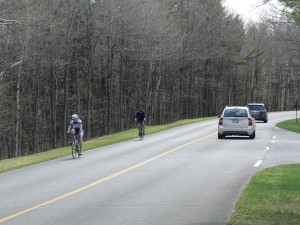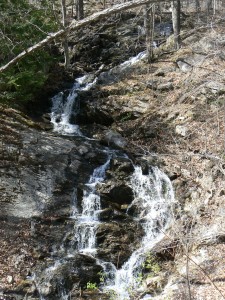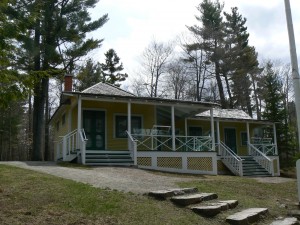Gatineau Park: Canada’s capital wilderness

Pink Lake in Gatineau Park is a meromictic lake, meaning it has layers of water that do not mix. A popular trail circles the lake. The Pink family were early settlers in the area. The lake is not pink and no pink panthers have been seen in the vicinity. Photo by James Morgan
While tourists are tip-toeing through the tulips in parks in the center of Ottawa, the capital region’s biggest, and much more rustic park is coming to life for another spring and summer season. A few days ago, the parkways through Gatineau Park opened after being closed for the winter and early spring. Gatineau Park began in 1938 with a few parcels of land and has since grown to over 89,000 acres (36,131 hectares) extending from near the center of Hull in Gatineau, north to La Peche, and east to Pontiac in Quebec. With parts of it just a 15-minute drive from Parliament Hill in downtown Ottawa, Gatineau Park acts as link between an urban area of 1.2 million people and remote wilderness.
The features of Gatineau Park and the challenges it faces are very similar to those of the much larger Adirondack Park in New York. Gatineau Park is not an official National Park of Canada. It’s instead controlled by the National Capital Commission (NCC). It’s an unelected commission that oversees parks and monuments in the capital region. This is similar to how the Adirondack Park isn’t an actual New York State Park but is instead regulated by the Adirondack Park Agency. The park is full of private property and small villages, too. Many of the home and cottage lots were there before the park was created, but every so often an exception is made to allow new development. Small buildings get demolished and replaced with larger ones. The short distance to the city brings in a lot of traffic, too. On weekends, traffic can be bumper-to-bumper on the parkways, parking lots for trails and picnic areas overflow, and drivers and cyclists struggle to share the road with varying levels of effort and success.
Don’t get the wrong idea though about Gatineau Park though. Like the Adirondack Park, it has places of great natural beauty and history that obscure its problems. It’s easily accessible wilderness, close to home. And except for parking at a couple of locations and fees for camping and beach use, it’s free. There are 102 miles (165 kilometers) of trails for hiking and some allow mountain biking. There are campgrounds in the northern part at Lac Philippe and Taylor Lake. There are waterfalls, caves, and scenic vistas throughout the semi-mountainous landscape of the park. There are popular beaches and picnic areas too. Even with challenges from development, bureaucracy, and the impact of hundreds of thousands of visitors every year, the NCC just released results of a study showing Gatineau Park’s ecosystems are in good condition. Deer, black bear, and many species of birds inhabit the park.
The centerpiece of history in Gatineau Park is the Mackenzie King Estate, one of the former homes of William Lyon Mackenzie King, Canada’s longest-serving Prime Minister. King began buying property around Kingsmere Lake before the park was created. It started with his cottage, Kingswood. He later bought a neighboring farm, and also built a main house called Moorside. King never married and had no children, so when he died in 1950, Moorside and Kingswood were left to the government and added to Gatineau Park and opened to the public. The farm became the official residence of the Speaker of the House of Commons.

“The Abbey.” Mackenzie King built the structure from ruins of other buildings as a place for his own spiritual reflection. Photo by James Morgan.
The man who led Canada through the Great Depression and World War II was also quite eccentric, and a lot of his eccentricity took place at his Gatineau Park estate. His leisure activities included séances with friends and colleagues where he would contact dead Prime Ministers and his late mother, of whom he was very fond. He would also communicate with his deceased dogs. King had three Irish terriers, all named Pat. When he wasn’t busy leading a country or talking with the dead, he liked to salvage old pieces of masonry from demolished or burned buildings and re-assemble them into his own abstract structures in the yard around Moorside. These are all still standing and are there for visitors to enjoy. The houses themselves are all open from May to October and fully furnished with interpreters to tell the story. Moorside also has a tea room, attractive gardens, and sometimes has outdoor musical entertainment.
For visitors to Ottawa wanting a different experience of Canada’s capital, an experience that is quieter and closer to nature, Gatineau Park is a good destination for spending a few hours or even a few days. Like any protected space, it has its challenges and vulnerabilities, but it manages to endure.










